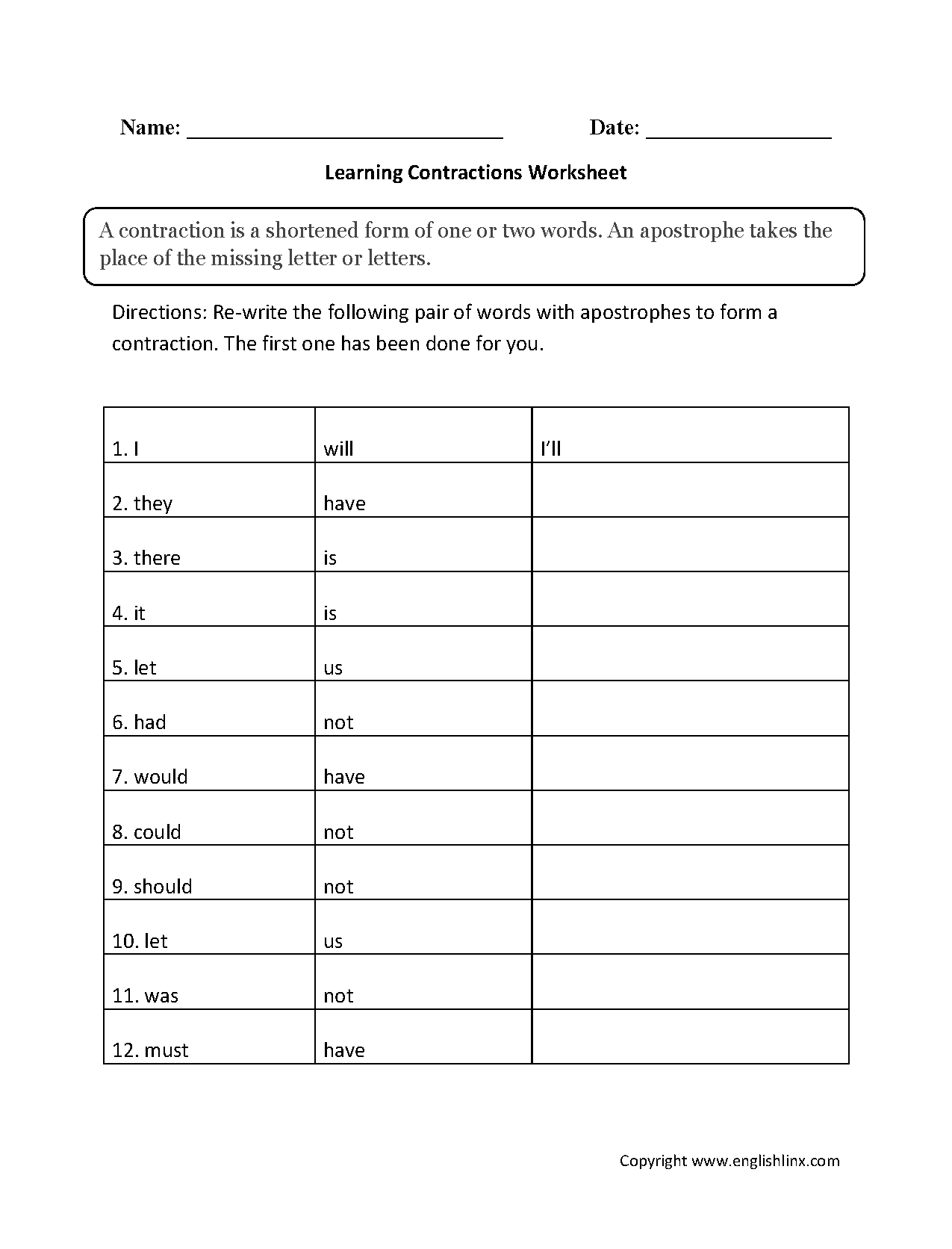Contractions are a fundamental part of the English language, and it is essential for students to understand how they work. Grade 5 is a crucial time for students to solidify their knowledge of contractions through worksheets and practice exercises. These worksheets help students identify, form, and use contractions correctly in their writing and speech.
Grade 5 students are at an age where they are expanding their vocabulary and learning more complex grammar rules. Contractions worksheets provide a hands-on approach to mastering contractions, which are shortened versions of two words combined with an apostrophe. By practicing with worksheets, students can improve their understanding of when and how to use contractions effectively.
Benefits of Contractions Worksheets Grade 5
1. Reinforcement of Concepts: Contractions worksheets offer reinforcement of the concept of contractions through various exercises such as fill-in-the-blank, matching, and sentence completion. This repetition helps solidify the rules and patterns of forming contractions.
2. Improved Grammar Skills: By working on contractions worksheets, grade 5 students can enhance their grammar skills, including punctuation and word usage. This practice can lead to better writing and communication skills in the long run.
3. Enhanced Vocabulary: Contractions worksheets also help expand students’ vocabulary by introducing them to different contractions and their corresponding words. This exposure to a variety of contractions can improve students’ language proficiency.
4. Preparation for Higher Grades: Mastering contractions in grade 5 sets a strong foundation for more advanced language skills in higher grades. Understanding contractions is essential for comprehending more complex grammar concepts in the future.
Overall, contractions worksheets for grade 5 offer a valuable tool for students to practice and improve their understanding of contractions. By engaging with these worksheets, students can enhance their grammar skills, expand their vocabulary, and prepare for more advanced language concepts in the future.
